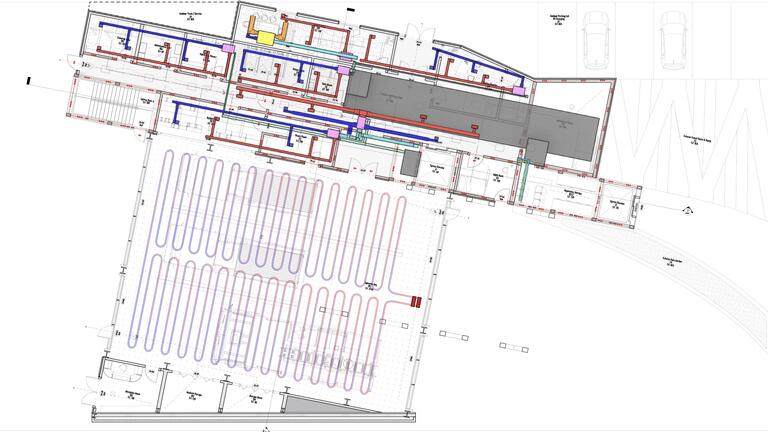Environment II: Design Integration of Active Building Systems
This course emphasizes the integration of active systems within commercial buildings, focusing on strategies for their successful combination with passive components.

Student work: Studio Integration Design for a Fire Station in Pittsburgh, by Isabella Shi, Angela Yang, Mingyang Zhu and Leyi Han, Instructed by Yiqun Pan
The pace of global climate change and political upheavals underscore the importance of our unrelenting commitment to a more sustainable future. One of the primary goals of this course is to strengthen a student’s understanding of their contribution to that future through design of the built environment. High performance buildings effectively integrate passive and active systems. This course focuses on active systems in commercial buildings and strategies for their successful integration with passive components. We also review the 2024 building codes that address outside air requirements for ventilation, and energy and water efficiency, and discuss where these codes lead or lag in promoting exceptional building performance. Environmental sustainability and buildings within the United States are emphasized, but we also consider how performance definitions may change where resources like energy or water are limited or unavailable. The active systems covered include lighting, ventilation, heating/cooling, water distribution and water heating, and renewable energy production and storage.
Prerequisite Knowledge
Successful completion of 48-116, 48-215 and 48-315 or their equivalent is expected. No prior knowledge of active commercial systems and systems integration is assumed, but students are expected to understand residential heating and cooling load calculations, to be able to identify factors in passive building design that affect those loads, and to quantify their impact.